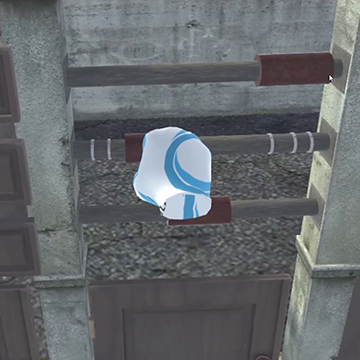
Our team created a demo to show how haptic design for 3D interactions enlarge the spectrum of VR/AR experiences. In order to fully design your virtual experiences and ease your haptic design for interactions with objects, we developed the Haptics Composer to design, test and iterate your haptic design experiences. After our previous blog post on haptics with lever interactions, today we tackle haptics for sliding interactions. By using Interhaptics, we built a demo showcasing specific applications of haptic design for dynamic elements. The demo is highlighting the role of haptics design for interactions with objects.
In each object section in the demo, you might notice that all the interactions appear identical. This is because you can’t feel the haptic design for interaction with the objects of the demo, thus you are not able to experience the difference. Indeed, the interactions with objects that you can see in the demo have a different haptics feedback. More specifically, each haptic design is in accordance with a specific interaction. Having this haptics feature to customize your haptic design for interactions will expand your possibilities with 3D development.

Haptic design for interactions: drawers

During your gaming experiences, whether you are trying to find items or exploring a scene to finish a quest, without realizing it, you are opening drawers all the time. If you played Red Dead Redemption 2, you know what we are talking about.
Unlike the Rockstar’s game, the haptics development of the drawers not only gives you a tangible feedback, but it also prevents useless movements. When the first drawer is opening, a light haptic design element alerts you that the drawer is fully open and you can stop the movement.

When opening the second drawer, the user can feel the contact between the wheels and the rail. This haptic design for interactions mirrors the movement of an old drawer in real life.

For the third drawer, the difference is that its haptic design is based on the friction of the wood during the interaction.

Haptic design for sliders

Sliders are often used in e-learning applications. In our slider panel, there are 3 distinct haptic design for interactions, with 3 different types of feedback. The peculiarity of the first slider is that haptics alerts the user that the slider reached the limits of its interaction structure.

The second slider shows the link between the haptic design element and the visual environment. Indeed, the slider has three cranks on its axis. Thus, you can feel an haptics feedback at each passing.

Finally, the third slider contains a simple augmentation of haptics amplitude when the slider reaches the middle of its path, giving you an indication of the slider position.

Click here to read about how haptic design for interactions can guide you into your VR experiences. Extend your reality now by downloading Interhaptics and design, test and iterate your haptics experiences.






